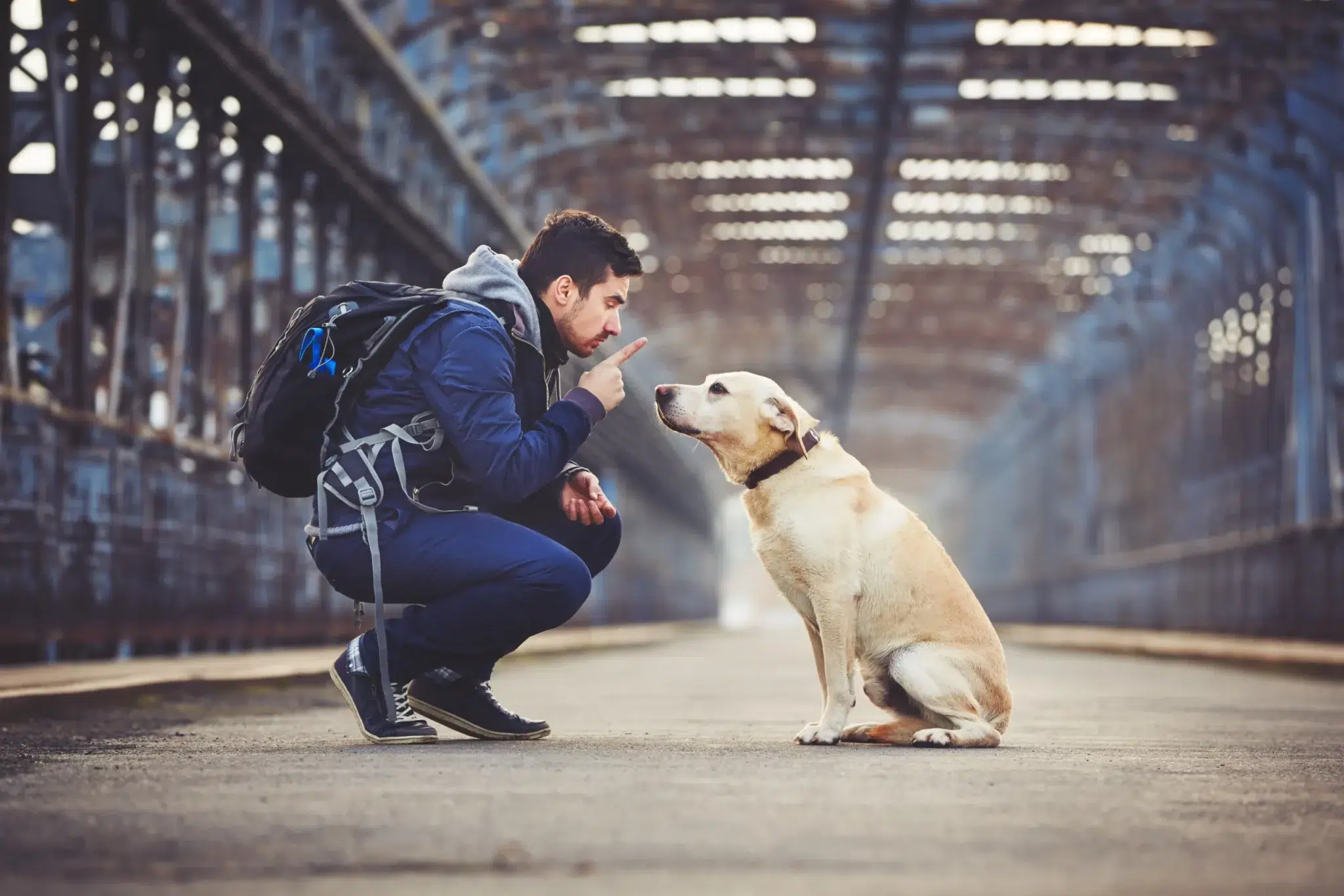Thanks to Steve Haynes, trainer and behaviorist, dogspecialist.com, Guest Contributor, for this article about the imprinting period.
Now that you know what the imprinting period is, how long it is, and what it means, we can get to the training. When you meet someone for the first time, you introduce yourself, or ask someone their name. If I go to a party, and someone yells “Steve!” and anyone named Steve turns to see who’s calling them, that is the first thing your puppy will learn too, and where we’ll begin training. This is foundational dog training, and it’s one of the first lessons professional trainers will do when they begin work with a young dog.
Puppy’s Name as Training Tool
For trainers, a puppy’s name is a tool. It’s a way to get the pup’s attention, stop it from whatever it is doing at the moment, and give us all of their focus. Best to do that work early so that the puppy learns during the imprinting phase that “well, this is how we do things, when they call me I turn and look at them.”
Learning its name is the first stage toward the puppy learning how to learn. So, the first thing is training a puppy to know its name. Training begins soon after puppy arrives home. Even if they’ve had a farm name or another name they’ve been called, they’re adaptable to learning their new name.
Most of the time they’ve had to travel to get there and in most cases, they won’t have eaten much on the journey. After they settle in for a couple of hours they are hungry and that’s when we start training.
How to Teach Your Puppy Their Name

Start small. Puppies don’t have long attention spans. So, repetition is key. Here are the steps I take when teaching a puppy it’s name.
- Sit on the floor with their bowl of kibble on a counter or tucked under my legs. Don’t give the puppy easy access to their food. I’ll put a kibble in my hand, hold my hand in front of the puppy and…..Say the puppy’s name and then immediately open up my hand to give them the treat.
- Repeat the first step about 500 more times.
- Do the first and second steps for the first 3 or 4 days, and this is important, do this with every single piece of food they get. The more repetitions, the faster the puppy will learn.
So, let’s talk about what’s going on here. The puppy hears its name and immediately something good happens (it gets a kibble…that’s good, right?). When we do that enough times the puppy starts to think “every time I hear that word something good happens….that word must be great”.
Most of the time, I’ll keep doing this exercise until I see the puppy do something specific. After enough repetitions of this at some point when I say the name, the puppy will start looking around the room a bit. It’s almost as if they start looking for when the word came from. They look a little puzzled and a little excited at the same time, and that is the signal I’m looking for.
Puppy Progression
That excited, puzzled look? That’s the goal. When I see that, I change the exercise a little bit. I’ll keep doing the hand feeding but I’ll move my hand with the kibble in it away from my body, just stretching out my arm. The puppy will almost certainly be looking at my fist where the kibble is by this point because it knows the kibble is in there. Then, I’ll say the puppy’s name. It may take a couple of iterations but the pups will look in my direction after I say it once or twice and that’s when I give them the kibble. Most pups will have to practice this for one or two meals, but they are smart. They learn quickly that when they hear their name that if they turn and look at me that’s how they get the kibble now.
When this works just sitting on the floor it’s time to make it more useful. I’ll start walking around the room where we keep the pup at the next mealtime, watching for the puppy to get interested in something other than me, or the hand that has a kibble in it, and start playing with or doing something else. Then, I’ll call the puppy’s name, and when it looks at me I’ll give it a kibble.
It’s a pretty powerful thing for a puppy to have to look at you when you call its name to get fed but this is one of the fastest and most effective ways i’ve found to teach a pup its name and to get it to start paying attention to me when I say their name.
“My People Call Me, and I Look Up at Them”
So, how does this relate to the imprinting period? When we teach puppy to look up at us when they hear their name and pay attention to what we’re doing or saying, that’s imprinting. Now, they understand. “My people call me, and I look up at them.”
As a trainer, the idea is to the puppy to look up at us on command. We have their attention. Now, we can move on to the next training exercise we want to practice.

I wish I had read this before I brought my rescue home last October. I’ve had to spend weeks working with a trainer getting him to look at me. He’s almost 14 months, he knows his name but I wish I had used this method. I will be doing this with his future sister!
Thanks, Maura! More to come on imprinting, so you’ll be set up for success.